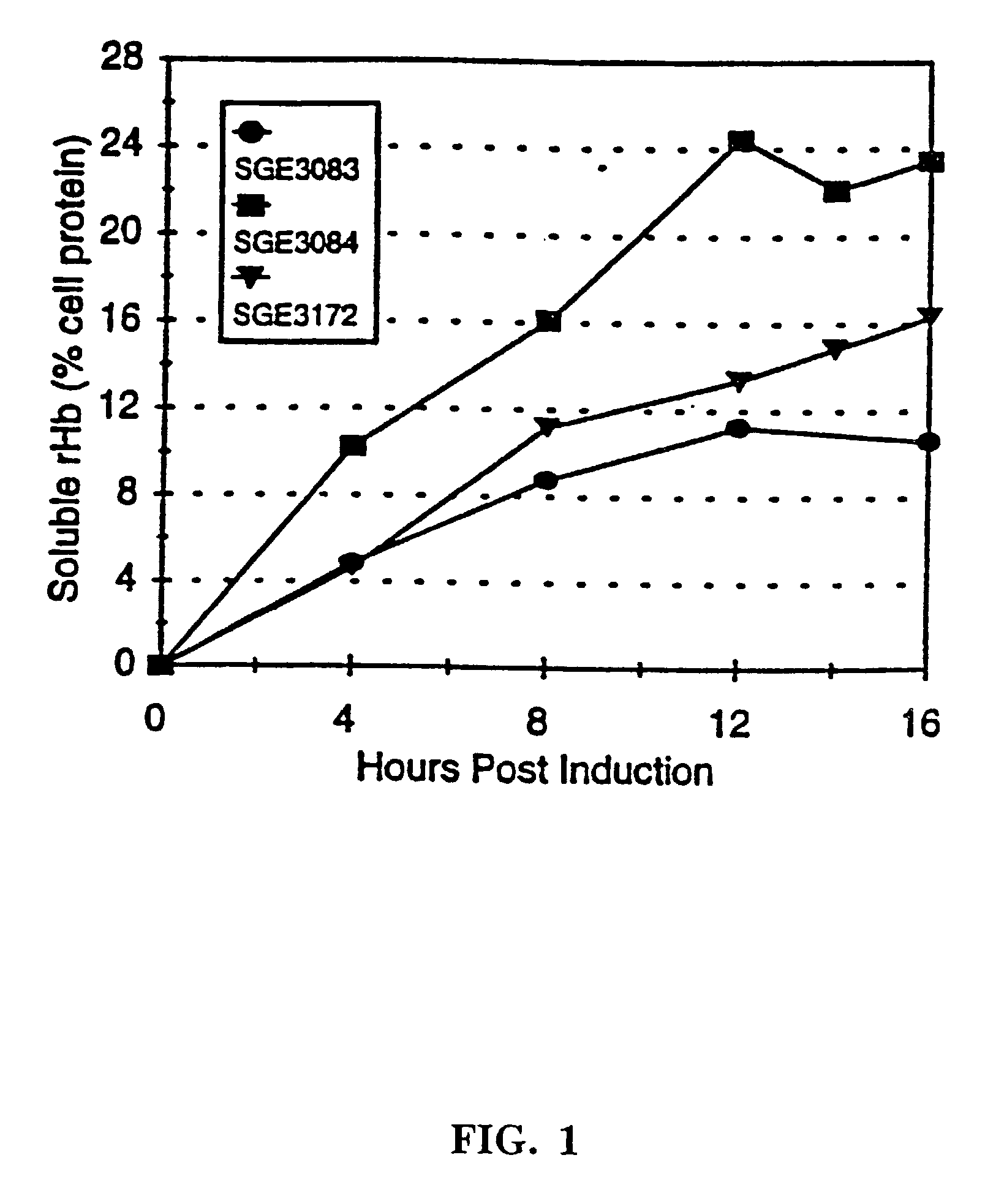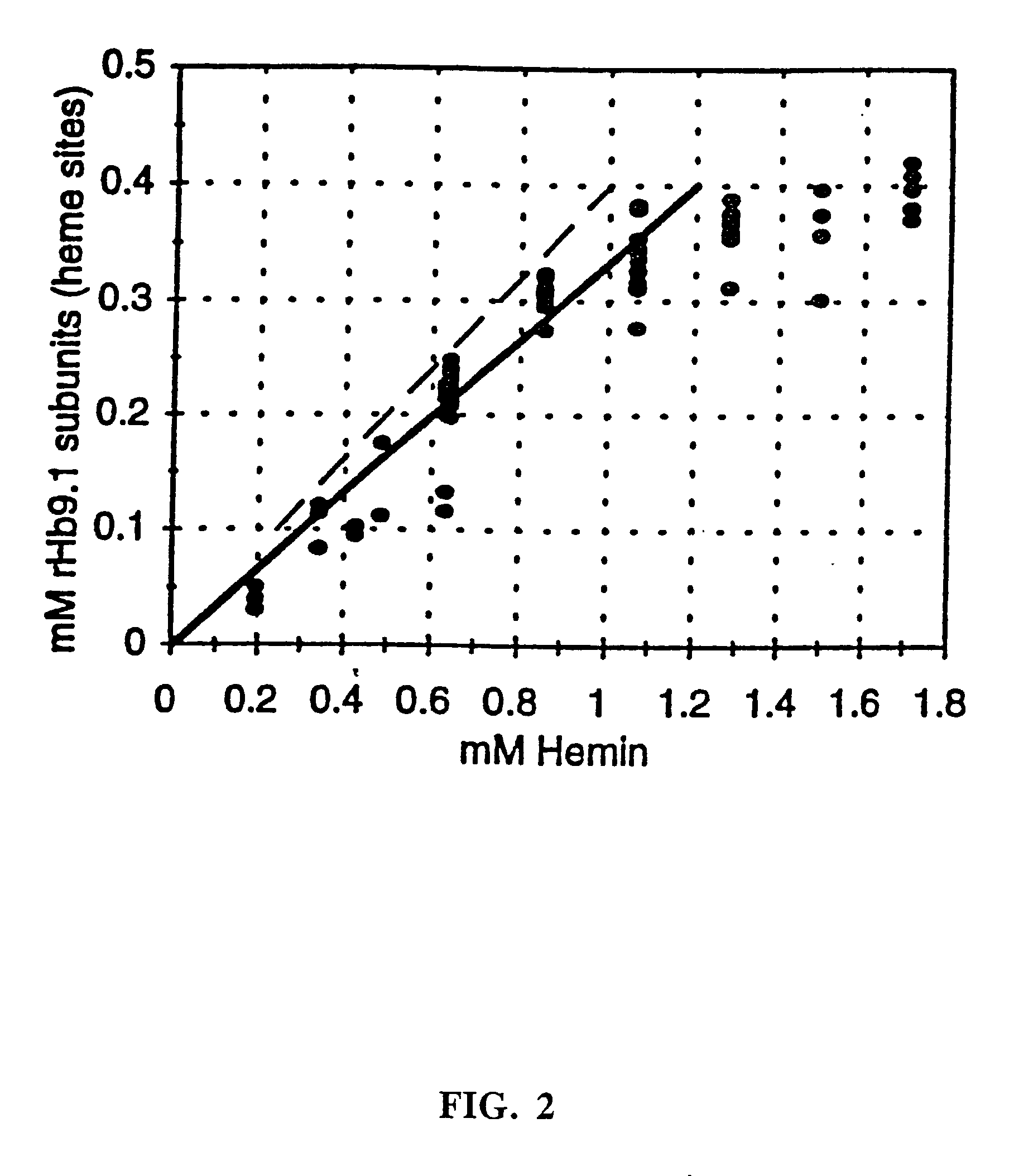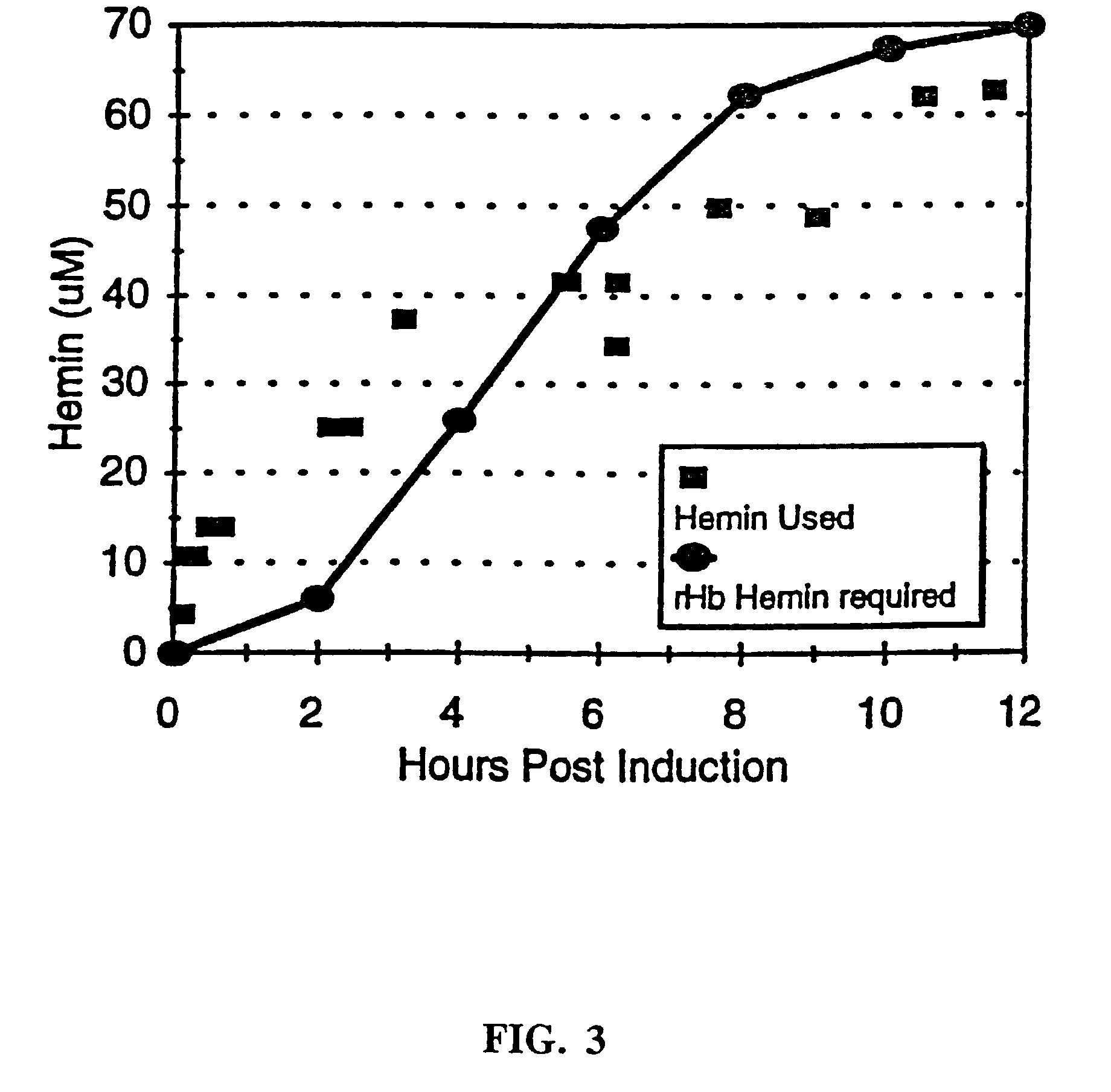Hemoglobin mutants with increased soluble expression and/or reduced nitric oxide scavenging
a technology of nitric oxide and soluble protein, which is applied in the field of hemoglobin mutants, can solve the problems of low soluble protein yield of recombinant hemoglobin, difficult economic production of heterologous protein in i>e.coli/i>e.coli, and low appreciation of the importance of the oxidative reaction between no and oxyhemoglobin, etc., and achieves high expression levels of soluble hemoglobin.
- Summary
- Abstract
- Description
- Claims
- Application Information
AI Technical Summary
Benefits of technology
Problems solved by technology
Method used
Image
Examples
example 1
Genetic Construction
[0271]PCR based cassette mutagenesis was used to incorporate desired amino acid substitutions. DNA sequence for variant codons was based on codons used in proteins that are highly expressed in E.coli as described in Sharp et al., Nucl. Acids Res., 16:8207–8211 (1988). In general, strains were constructed by transformation of the plasmid DNAs into E. coli strains lacking a plasmid using the procedure of Chung, et al. Proc. Natl. Acad. Sci. USA, 86:2172–2175 (1989), or Hanahan, DNA Cloning: A Practical Approach, V. 1, pp. 109–135 (IRL Press, 1985).
[0272]A variety of E.coli strains were used, including those listed in Tables 4 and 5. The construction of these strains, especially those containing different oligomerizing mutants or domains, is described in WO 97 / 04110, incorporated herein by reference. Tables 4 and 5 summarize the strain background and plasmid backbone used for the expression of these molecules. Plasmid copy number has been shown to influence soluble ...
example 2
Construction of Beta Mutations
[0275]pSGE728 was constructed by XhoI digestion and deletion from pSGE720 of one alpha subunit and the di-alpha glycine linker. The resulting plasmid, pSGE726, contains a single alpha gene rather than a di-alpha gene (rHb1.0). The Presbyterian mutation in beta was replaced by digestion with BglII and HindIII, and ligation to introduce wild-type beta and create pSGE728 (rHb0.0). The Presbyterian mutation in the beta gene of pSGE720 was replaced by digestion and ligation as for pSGE728, to introduce wild-type beta and created pSGE733 (di-alpha and wild type beta; rHb0.1).
[0276]The Providence mutation (βLys82→Asp) was introduced into the rHb1.1 background to create rHb9+1.1. The Lys82→Asp mutation was created by PCR amplification of a portion of the β-globin gene using an oligonucleotide containing an Asp codon in place of the Lys82. CBG124 (wild-type beta coding sequence 5′ primer near BspEI site) and CBG119 (3′ primer containing the βK82D mutation downst...
example 3
A. Bacterial Growth and Lysis Procedures
[0280]Each isolate tested was grown overnight at 37° C. as a patch on an LB plate supplemented with tetracycline. Inoculums were transferred via sterile toothpicks to 0.75 ml aliquots of fresh DM-1 media as described in Looker et al., (1992), supra, with 15 μg / ml tetracycline, 0.1 M IPTG (Sigma) and 0.05 mg / ml hemin (Ameresco) in sterile 12 mm (i.d.) borosilicate tubes. The cultures were incubated at 30° C. for 18 hours with 350 rpm shaking in a New Brunswick Series 25 Incubator Shaker. The 0.2 ml aliquots were transferred to a 96 well flat bottom microtiter plate (Immunlon 4 from Dynatech). The optical density of each well was recorded at 650 nm using the Spectral Dynamics microplate reader and Softmax software package. The cells were pelleted to the bottom of the microplates at 3000 rpm at 4° C. for 10 minutes using the Beckman RK6 centrifuge, 3.7 rotor and microplate adapter buckets. The spent media was removed and the cells were resuspende...
PUM
| Property | Measurement | Unit |
|---|---|---|
| body weight | aaaaa | aaaaa |
| body weight | aaaaa | aaaaa |
| body weight | aaaaa | aaaaa |
Abstract
Description
Claims
Application Information
 Login to View More
Login to View More - R&D
- Intellectual Property
- Life Sciences
- Materials
- Tech Scout
- Unparalleled Data Quality
- Higher Quality Content
- 60% Fewer Hallucinations
Browse by: Latest US Patents, China's latest patents, Technical Efficacy Thesaurus, Application Domain, Technology Topic, Popular Technical Reports.
© 2025 PatSnap. All rights reserved.Legal|Privacy policy|Modern Slavery Act Transparency Statement|Sitemap|About US| Contact US: help@patsnap.com



